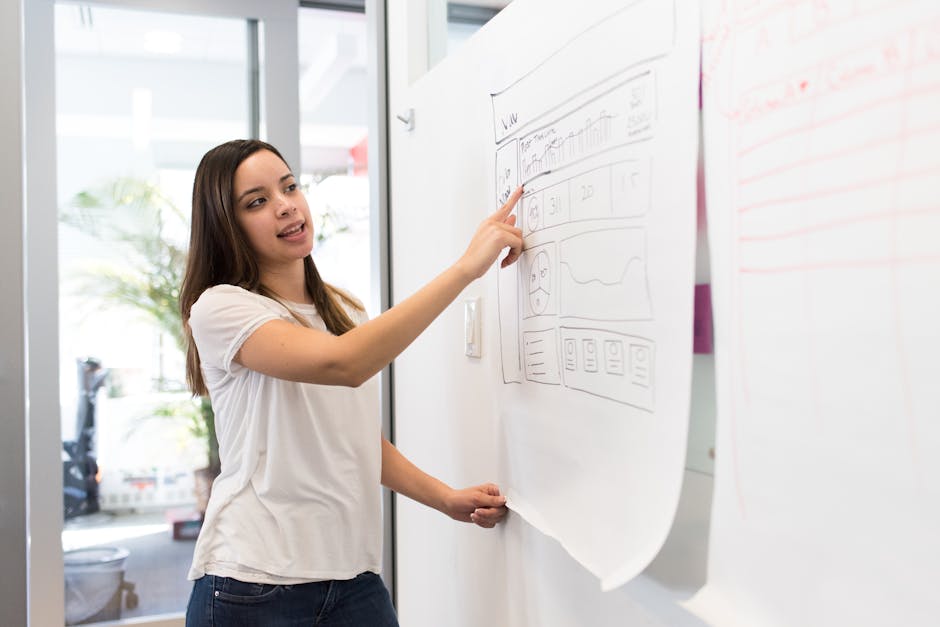The Benefits of Collaborative UX Design
Have you ever wondered why some apps are so easy to use while others leave you frustrated? It often comes down to how they were designed. Collaborative UX design plays a big role in creating user-friendly experiences. Lets dive into the many benefits of working together in this exciting field.
What is Collaborative UX Design?

Collaborative UX design means bringing together people with different skills and perspectives to create a product. Think of it like cooking a meal. If everyone in the kitchen has their own recipe, the dish might turn out bland. But when chefs, home cooks, and food critics join forces, the result is a delicious feast.
This teamwork can involve designers, developers, marketers, and even users. Each person adds their unique flavor, making the final product much richer. Research shows that teams who collaborate effectively can boost creativity and innovation by up to 30%!
Why is Collaboration Important?

You might ask, Why can’t one person just do it all? While a solo designer can have great ideas, they might miss key insights. Collaboration fills those gaps. Heres how:
- Diverse Perspectives: Different viewpoints lead to fresh ideas.
- User-Centered Focus: Including users in the design process ensures the product meets their needs.
- Shared Responsibility: When everyone contributes, the workload feels lighter.
Working together also fosters a culture of open communication. Team members feel more comfortable sharing their thoughts, which can spark new ideas.
How Does Collaborative UX Design Benefit Users?

At the end of the day, the user experience is what matters most. Collaborative UX design directly benefits users in several ways:
- Better Products: More perspectives lead to better design choices.
- Faster Feedback: Getting input from various team members speeds up the design process.
- Increased Satisfaction: When users are part of the conversation, their needs are prioritized.
For instance, think about your favorite social media app. Developers may have collaborated with users to understand what features matter most. This ensures a smoother experience, keeping you engaged.
What Skills Are Needed for Successful Collaboration?

Collaboration isn’t just about getting people together; it also requires specific skills. Here are some essential ones:
- Communication: Clearly sharing ideas and feedback helps everyone understand the vision.
- Empathy: Understanding other team members perspectives leads to better solutions.
- Flexibility: Being open to new ideas can improve the final product.
Just like a sports team, each player has strengths. A great collaborative team plays off each others strengths to create a winning design.
What Tools Can Enhance Collaboration?
Technology can make collaboration easier. Here are some popular tools that teams use:
- Figma: A design tool that allows multiple people to work on a project in real time.
- Trello: A project management tool to organize tasks.
- Slack: A communication platform to keep conversations flowing.
Using the right tools helps streamline the process. This means less time managing projects and more time creating amazing designs.
Can You Measure the Success of Collaborative UX Design?
Absolutely! You can evaluate collaboration success through various metrics. Here are a few to consider:
- User Satisfaction: Surveys can gauge how users feel about a product.
- Time to Market: Track how long it takes to develop a product.
- Team Morale: Happy teams often lead to better designs.
By tracking these metrics, you can see how collaboration impacts the design process and user experience. This data can guide future projects.
What are Common Misconceptions About Collaborative UX Design?
Many people believe that collaboration slows down the process. However, this isn’t always true. Heres why:
- Increased Efficiency: More minds working on a problem can lead to faster solutions.
- Fewer Errors: Having multiple perspectives often catches mistakes early.
- Greater Innovation: Collaboration can spark creative solutions that one person might miss.
While it may seem like more voices create chaos, the opposite is often true. The synergy of collaboration can lead to quick and effective resolutions.
How Can You Implement Collaborative UX Design?
Ready to embrace collaborative UX design? Here are some actionable steps:
- Assemble Your Team: Gather individuals with different skills and backgrounds.
- Set Clear Goals: Define what you want to achieve together.
- Encourage Open Communication: Create a space where everyone feels comfortable sharing ideas.
- Incorporate User Feedback: Include actual users in your design process for valuable insights.
By following these steps, youll create a collaborative environment that fosters creativity and innovation.
Closing Thoughts on Collaborative UX Design
Collaborative UX design isn’t just a trend; it’s a powerful approach to creating better products. When teams come together, they unleash a wave of creativity that can lead to amazing user experiences.
Remember, the ultimate goal is to design products that resonate with users. By incorporating diverse perspectives, embracing technology, and fostering open communication, you can take your projects to new heights.
So, are you ready to start collaborating? Whether you’re in a team or on your own, consider how you can use these ideas to improve your design process. For more insights on effective UX practices, check out our related post on UX Best Practices.
By embracing collaboration, you can design products that not only meet user needs but also stand out in a competitive market.

